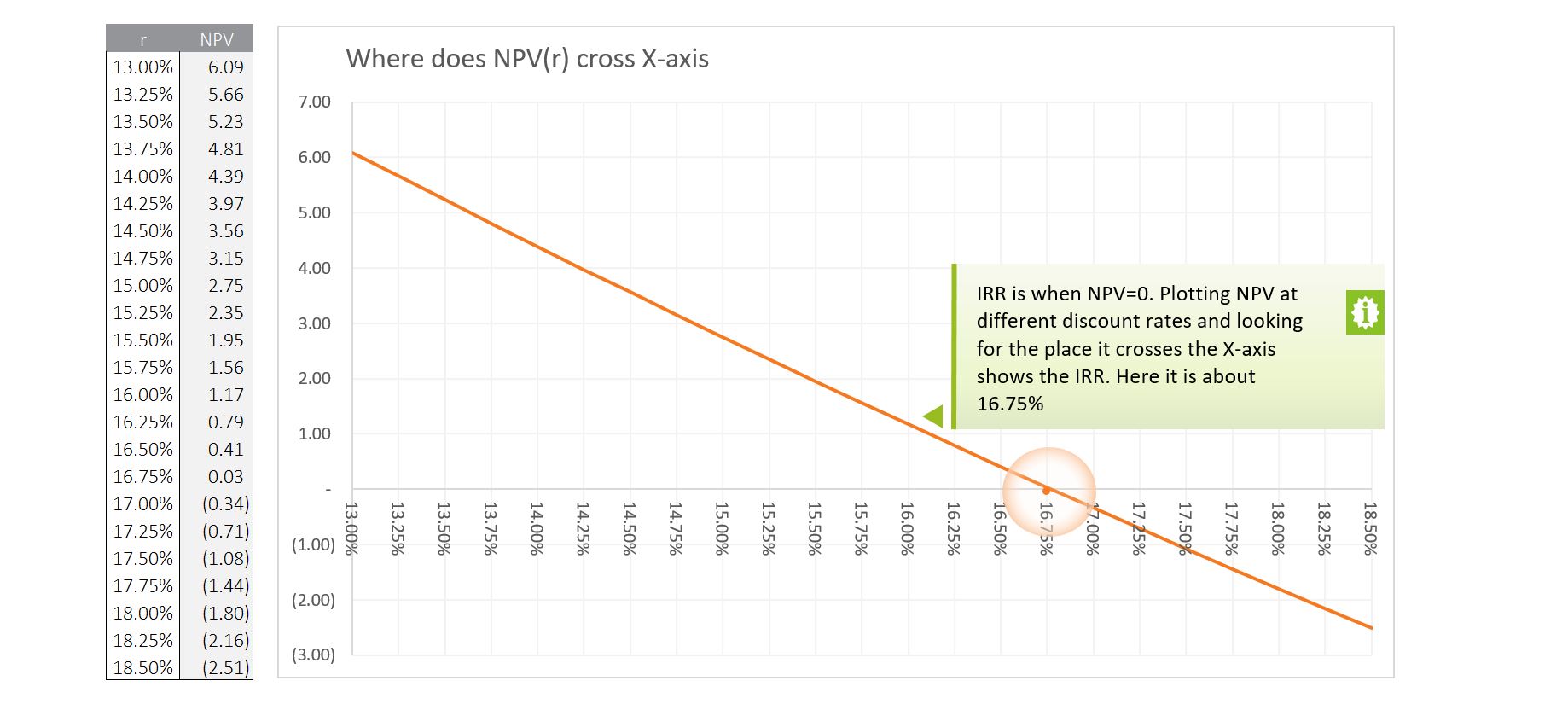Calculating Project Return in Project Finance
Introduction
In this article, we introduce the concept of the Project Return and how to include it in a typical project finance financial model. We encourage you to read this with the accompanying Excel workbook so you can review the layout of the calculations and the actual formula - rather than just read about it.
If you find this useful and you want to understand more about the intention, interpretation and market nuances of either the Project or Equity Return and how it works in different situations then ask about our two day, 100% hands-on, case study based, Project Finance Analysis course, delivered in person by Nick Crawley.
Download Workbook Download PDF Training Courses
The Project Return is an IRR calculation performed on the net cashflow resulting from the development expenditure and net operational cashflow generated from the project. It is essential that all aspects of the capital structure are removed from these lines and that all line items are cash based. Briefly, the Equity Return, incorporates the leverage achieved through gearing, as such if it is economic to gear the project then it will return a higher comparative value than the Project Return.
Presenting the Project Return
The Project Return, like any IRR based value, is usually shown along with the NPV and also :
- Explicitly which lines are included in the calculation
- Is it Real or Nominal
- Is it Pre or Post Tax
- What discount rate has been used for the NPV
- What is the evaluation date
- Anything special the reader needs to know (inclusions / unexpected items)
.JPG.aspx)
Include
"All cashflows associated with developing and operating the project that are not related to how it is funded."
- Capital expenditure
- Operating expenditure
- Tax (ungeared)
- Revenue (receipts)
.JPG.aspx)
Exclude
"Everything to do with financing, thinking through important secondary flow-on effects."
- Interest earned (unless you re-cut an ungeared version – hard work!)
- Interest paid (inc. Political Risk Insurance)
- Commitment fees / line fees
- Up-Front / establishment / refinancing fees
- Principal repayments
- DSRA initial funding and movements
- Dividends
- Grants
- Withholding tax
- Anything cash related to satisfy financiers - insurances, tax reserve accounts...
Advanced considerations
As is often the case there will be aspects that are not black-or-white and in these situations it is important to make a call and be clear in your reporting of anything marginal. For example, tax losses that have been generated due to earlier financing, such as interest and fees. I would argue philosophically that once a loss has been recognised and is available it doesn't matter how it was generated but it is better to be clear than not!
Some other aspects to consider and be clear on are the treatment of
- A post tax Project return requires a duplicate of the tax calculations with no finance related deductions.
- Interest on cash balances that themselves include financial aspects
- Terminal values
- What is the ‘initial value’ for the IRR() calculation – default is 10%
- If there are multiple changes in sign of cashflow have you you explored multiple IRRs?
Real vs Nominal
Nominal cashflows include inflation. Real, do not. The factors subject to inflation are operational cashflows, interest rates and ultimately discount factors. There are major, global, project developers and investments who put more weight on real analysis, especially in the resources industry. I have always found this a challenging concept because if your argument is that inflation adds an unnecessary, uncertain and often (literally) inflationary factor to your analysis you are building important cashflows such as tax payments that will be higher than you are planning for. Adding in inflation / CPI / RPI etc is just one more assumption that requires due diligence and clarity. Either way - be very clear on the basis of the cashflows which you are performing a project return calculation over.
Nick’s cheat sheet
Here are some of the first things I look for when analysing a project return - using this you find most errors annoying quickly!
- If I see a ‘geared’ Project Return then the alarm bells ring!
- Is the Project Return < Equity Return
- Does Project NPV = 0 if the NPV discount rate is replaced with the Project Return
- Does Project Return change when gearing changes, it shouldn’t.
- Is the SUM(Net Project Cashflow) > SUM( Discounted net cashflow) over the project life? It should be.
- Is the project highly sensitive to discount rate - if it is then the science behind the discount rate needs to be bullet-proof. I like to plot NPV as a function of discount rate to understand this and also to hunt for multiple IRRs.

Common errors
The repeat offenders of errors in the project return in project finance financial models are:
- Inclusion of non-cash items.
- Including financial line-items.
- Tax includes a deduction for interest and fees (a separate tax calculation is needed).
- Inclusion of interest earned which includes DSRA interest earned.
- Using a nominal discount rate on real cashflows
Summary
When you get to the board room and are comparing two projects with different characteristics and are trying to benchmark a project or assess the benefit of gearing then Project Return is the starting point. To understand the fundamental viability of a project I analyse this metric over a range of key variables and scenarios; how it moves compared to the Base Case often reveals some of the biggest errors.
If you found this helpful and would like to learn about other aspects of Project Finance Modelling or Advanced Financial Modelling then you would love our training courses! Check them out here or just give us a call.
I hope that was useful – smooth and happy modelling!
